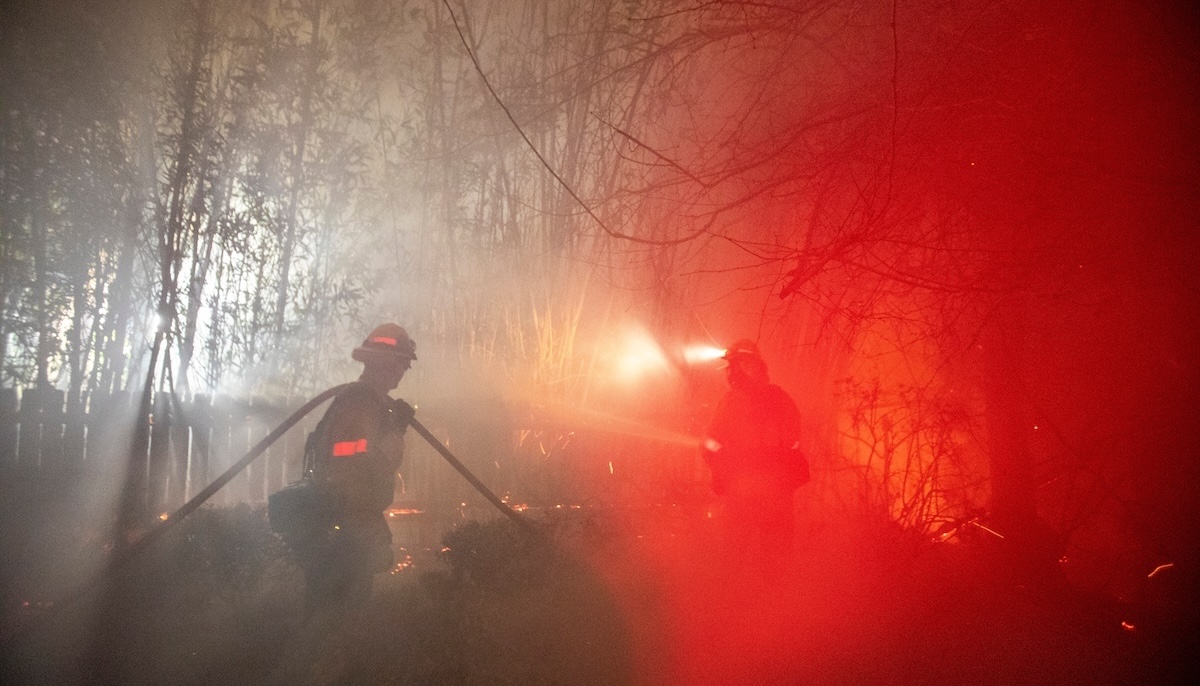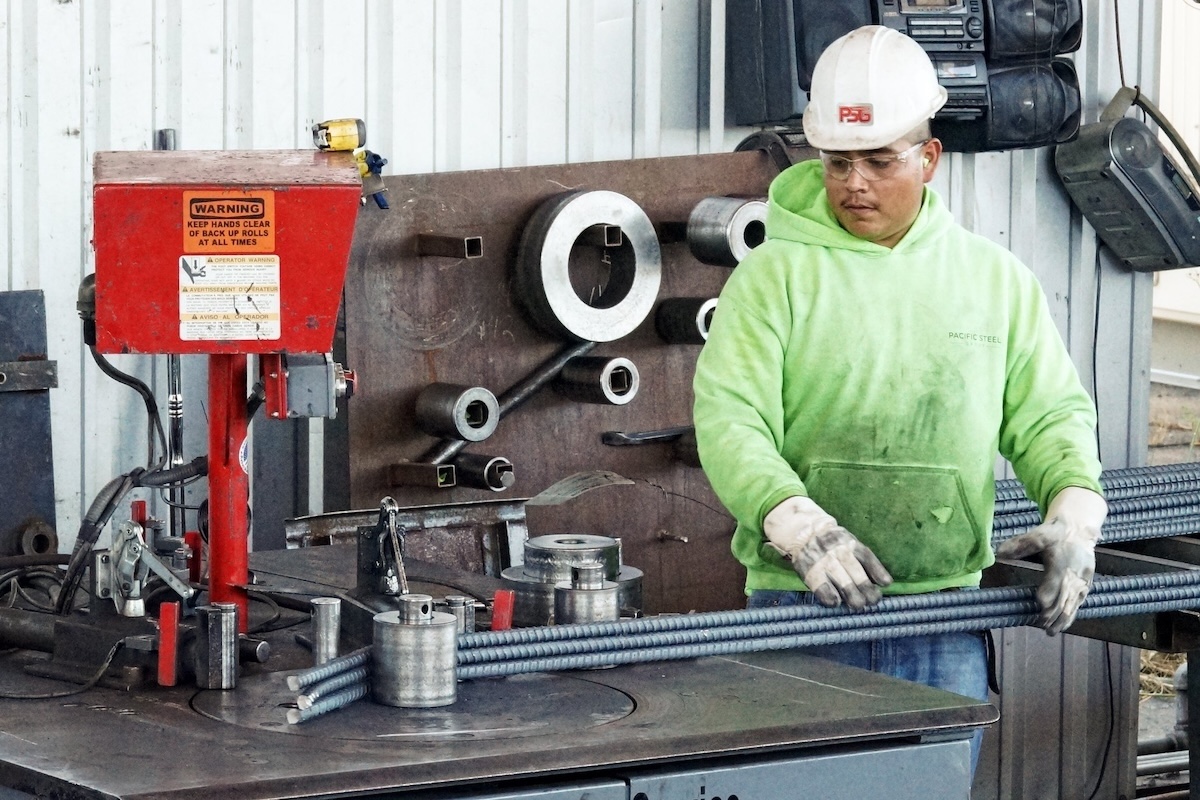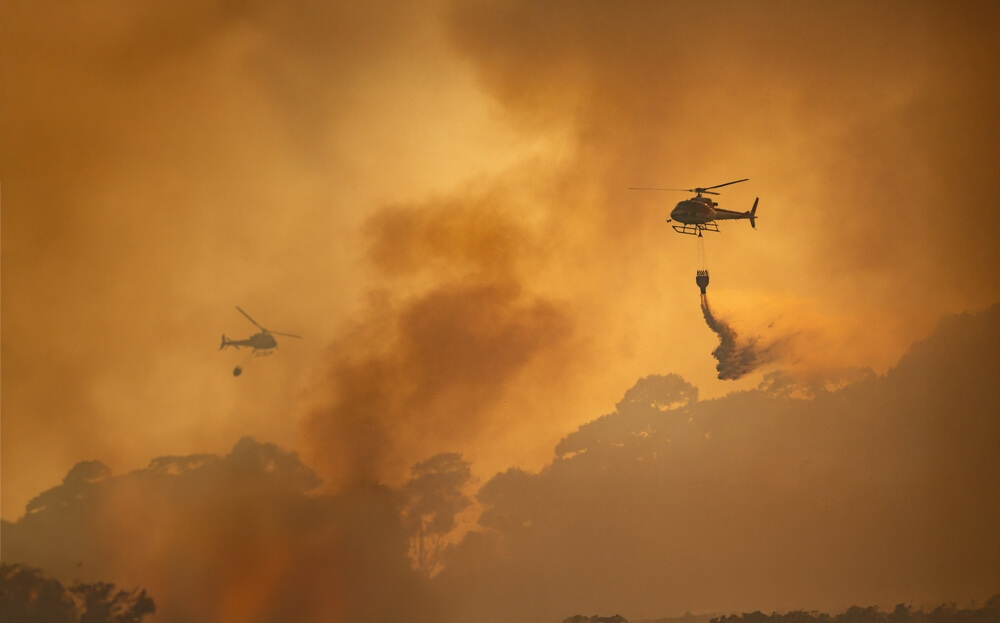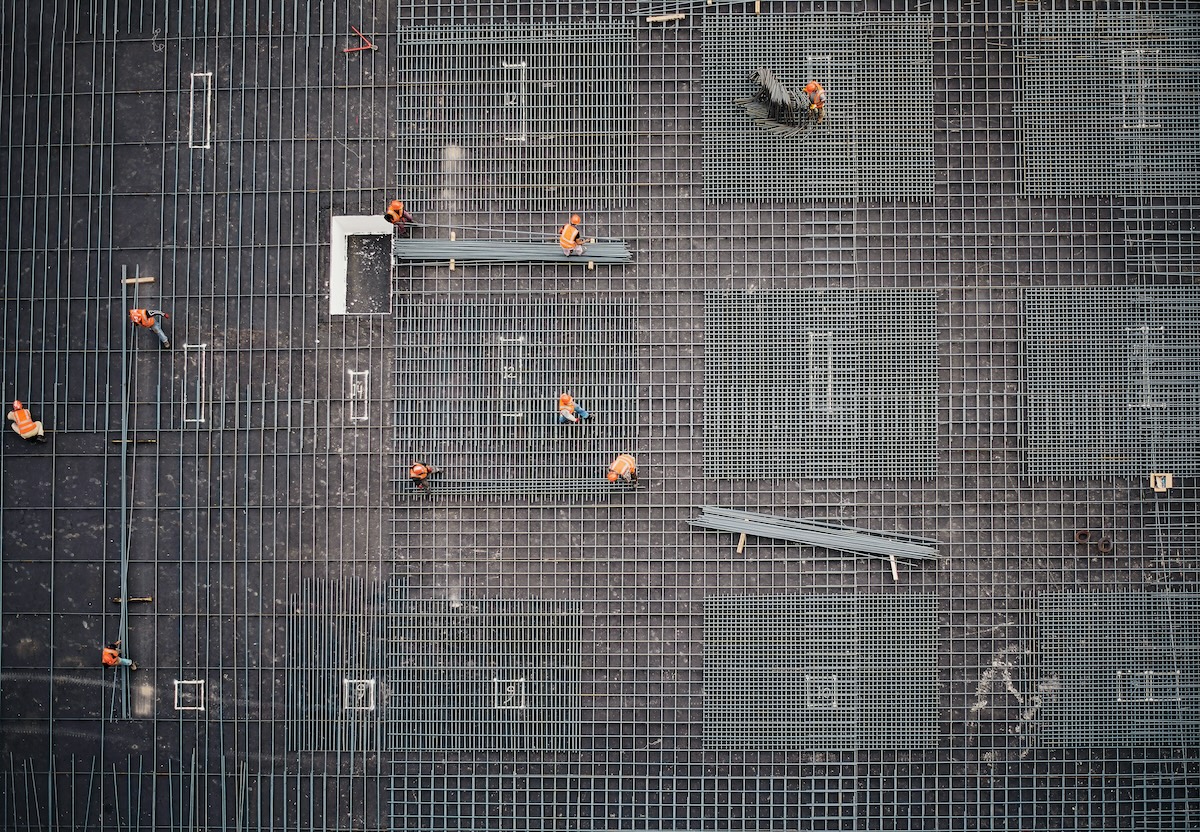Greetings Agents of Impact!
In today’s Brief:
- Fire tech to spot, if not stop, deadly wildfires
- Removing ‘forever chemicals’ sooner
- Taking African investing insights to Asia’s emerging markets
Featured: Fire Tech
In the age of fire, tech solutions can help but not heal. In September, it was Hurricane Helene and too much water. In January, it’s the Los Angeles firestorms and not enough water. Fueled by 100-mile-an-hour Santa Ana winds, the fires have killed at least two dozen people and destroyed thousands of homes. The recurring reminders of a changing climate are spurring what Lightsmith Group’s Jay Koh calls the “unavoidable opportunity” of climate adaptation. It is still unknown what sparked the fires in the Pacific Palisades, Altadena and other Southern California neighborhoods. Lightning has been ruled out; the other most common causes of such outbreaks are downed utility lines and human activity. San Francisco-based Gridware has mounted tens of thousands of AI-powered sensors on utility poles to quickly detect anomalies that could affect the grid’s performance and ignite wildfires. On one of the hottest days last year, Gridware’s sensors helped detect a fallen tree on a power line that could have resulted in a catastrophic wildfire, says the company’s CEO Timothy Barat. Gridware last week raised $26.4 million in Series A financing, led by Seqoia Capital, with participation from existing backers Fifty Years, Lowercarbon Capital, True Ventures, and Convective Capital.
- People-powered relief. As in Asheville, NC, after Helene, a powerful mutual aid effort has sprung into existence in LA, as neighbors help neighbors cope with extreme loss and confusion. SidePorch’s Sean Knierim, whose family lost its home in the Palisades fire, recommends Community Organized Relief Effort, founded by Sean Penn and Ann Young Lee after the 2010 earthquake in Haiti. GoFundMe has compiled individual verified fundraising campaigns for fire victims on a single page. Residents have also compiled spreadsheets to help displaced Black families and displaced Latino families. California Community Foundation’s wildfire recovery fund supports housing, case management, mental health, and medical care for displaced residents. The nonprofit Forestry and Fire Recruitment Program, based in LA, trains formerly incarcerated firefighters to work as wildland firefighters and forestry technicians.
- Grid management. Barat got the idea to launch Gridware in 2009 while working as an electrical lineman in Australia. During Australia’s Black Saturday bushfires, the country’s deadliest, Barat says he “witnessed firsthand how the dangers of a vulnerable power grid are exacerbated by a lack of visibility.” Since wrapping up a pilot with PG&E, which a year ago agreed to pay $45 million for its role in igniting the 2021 Dixie fire in Northern California, the company has signed on 18 major utilities in the US covering 1,000 miles of transmission lines. Barat says Gridware’s revenues grew seven-fold last year. “Power utilities require novel and emerging solutions to drive grid transformation and resilience,” Barat says.
- Wind-driven. No fire tech could have prevented the still-raging fires in Los Angeles, which broke out during a dry spell in what is normally the region’s rainy season. The average global temperature last year was more than 1.5 degrees Celsius warmer than the historical average, making it the warmest year on record and breaching a critical warming threshold. There’s a difference between the fuel-driven forest fires of recent years and this month’s wind-driven fires, says Blue Forest’s Zach Knight. San Francisco-based Torch Sensors has brought to LA an inventory of its early wildfire detection sensors, powered by AI and solar, to assist firefighters in monitoring for re-ignition. “We have enough sensors for 300+ acres of real time coverage and can redeploy to areas needed most,” Torch Sensors’ Joseph Morris shared in a Linkedin post.
- Firetech startups. Convective Capital says it has a global pipeline of 600 wildfire tech startups. Its first fund raised $35 million in 2022; it’s seeking $75 million for its second fund to invest in early-stage startups that can detect and contain wildfires. Clerico, with support from the Gordon and Betty Moore Foundation, also runs the annual Red Sky Summit, which brings together fire tech funders and entrepreneurs (here are the takeaways from the November event). In Convective’s portfolio is Pano AI makes wildfire sensors to locate where new wildfires are being sparked. BurnBot is building robots and remote-controlled vehicles that can chop and burn invasive plants and other vegetation that fuel wildfires. Vibrant Planet makes software to help land managers implement better fire prevention and forest health practices. In November, CrowdDoing’s Catastrophic Wildfire Prevention Consortium presented 10 wildfire tech startups, including the data-modeling platform Vibrant Planet, and Strong Water, which claims to increase the fire-fighting effectiveness of water by up to 10x.
- Share this.
Dealflow: Investing in Water
Chromafora raises €22.5 million to remove ‘forever chemicals’ from wastewater. Regulators around the globe are increasingly targeting PFAS, the ubiquitous polyfluoroalkyl substances found in non-stick cookware, fire retardants, cleaning products and other everyday products. PFAS, which are linked to cancer, decreased fertility, liver damage and other health concerns, have found their way into public water supplies. Chromafora, a Swedish company, removes PFAS with advanced filtration and chemical processes. The European Investment Bank provided Chromafora with €22.5 million ($23.1 million) in debt to help deploy its PFAS water-treatment systems with landfill operators in Sweden, Belgium and other European countries (see, “Water, long overlooked, is increasingly investable”). The loan “highlights our commitment to supporting clean-water technologies that benefit both the environment and public health,” said EIB’s Thomas Östros.
- PFAS solutions. Companies that are working to identify and remove PFAS in water include Menlo Park, Calif.-based OceanWell and KETOS, which makes AI-powered water testing systems for monitoring PFAS and heavy metals in drinking water. Chromafora is developing a process that removes and recycles valuable heavy metals such as copper and uranium from polluted water. A team of researchers has developed a method to break down PFAS by using light, eliminating waste.
- Water justice. Environmental and health government agencies in Europe and the US have tightened regulations on PFAS in water. The US Environmental Protection Agency last year launched the Emerging Contaminants in Small or Disadvantaged Communities grant program, backed with $5 billion from the bipartisan infrastructure law, to reduce exposure to PFAS and other harmful chemicals found in community water supplies.
- Share this post.
Dealflow overflow. Investment news crossing our desks:
- New Orleans-based PosiGen, which is financing rooftop solar and energy efficiency upgrades for low-income homeowners, secured an additional $200 million from Brookfield Asset Management. Brookfield has invested $600 million in PosiGen’s since 2023 (see, “Solar proves a pathway for private capital to flow into low-income communities”). (Canary Media)
- Evergreen Nephrology raises $130 million from Rubicon Founders, Oak HC/FT, K2 HealthVentures and others to expand access to value and outcomes-based care for US patients with kidney disease. (Evergreen)
- Norfund allocated 235 million Norwegian kroner ($20.5 million) to Meridiam’s Urban Resilience Fund, a blended-finance fund that invests in clean energy, waste management and green transport infrastructure in African cities. (African Private Equity News)
- Mumbai-based Infinity Fincorp raised $35 million in a funding round led by Jungle Ventures to provide small loans to tea shop owners, vegetable vendors, electricians and other small businesses overlooked by India’s traditional lenders. (YourStory)
Signals: Infrastructure Investing
How a blended finance fund is leveraging African expertise for infrastructure financing in Asia. After two decades of providing flexible, patient capital for infrastructure projects in Africa, the Emerging Africa Infrastructure Fund saw an opportunity to apply its insights to emerging markets in Asia. Both regions are fast-urbanizing and vulnerable to climate change and natural disaster. Small and medium-sized businesses play a critical role in economic growth in each. Asia’s developing markets are less saturated by investors and offer opportunities for sustainable growth and impact, Esther Chan of Ninety One, which manages the fund, tells ImpactAlpha. Now called Emerging Africa and Asia Infrastructure Fund, or EAAIF, it raised $294 million in debt last January – more than half of its $500 million fundraising target – and is looking to deploy at least $1 billion over the next four years in Africa and Asia.
- Portfolios over projects. EAAIF is drawing on learnings from investing in Africa to replicate its impact in Asia. One lesson: investing in portfolios of projects helps scale impact, says Chan. In late 2023, EAAIF offered a $30 million loan to renewable energy developer Axian Energy to set up greenfield utility-scale solar projects in Senegal, Madagascar, Mozambique, Sao Tome and Principe and other countries. “That’s a learning that we’re taking in Asia,” says Chan. EAAIF’s second Asia investment, a $20 million loan to CME Solar, a Vietnamese commercial and industrial solar solutions provider, will support a pipeline of rooftop solar projects in the country.
- More.
Agents of Impact: Follow the Talent
The GIIN invites impact investors to take part in its 2025 Impact Investor Survey, which is open through Friday, Feb. 28. (For a glimpse of last year’s results, see, “And the size of the impact investing market is $1.5 trillion…ish”)… GSG Impact adds new board of trustee members including Impact Finance Belgium’s Steven Seerneels, Royston Braganza of Grameen Impact Investments India, and Austin Mwape of Absa Bank Zambia… TruFund Financial Services promotes Kim Carter Evans to executive vice president and chief operating officer.
Mercia Geises from Standard Bank Namibia is tapped to become CEO of Namibia Hydrogen Fund Managers, which is co-owned by Climate Fund Managers, the Environmental Investment Fund of Namibia, and Invest International… Norrsken VC is recruiting an investment analyst in Stockholm… Macquarie Group has an opening for a social impact investment manager in Sydney… Closed Loop Ventures is on the hunt for an investor revelations director and other roles in New York… Fresh Ventures is looking for an impact venture builder.
Incofin Investment Management seeks a legal counsel representative in Colombia… Mission Investors Exchange’s Katheryn Witt will moderate a virtual discussion on Tuesday, Jan. 28 about the potential of the Greenhouse Gas Reduction Fund for impact investments, with Kresge Foundation’s Joe Evans, Krystal Langholz of Climate United, and Marla Bilonick of the National Association for Latino Community Asset Builders.
👉 View (or post) impact investing jobs on ImpactAlpha’s Career Hub.
Thank you for your impact!
– Jan. 13, 2025












